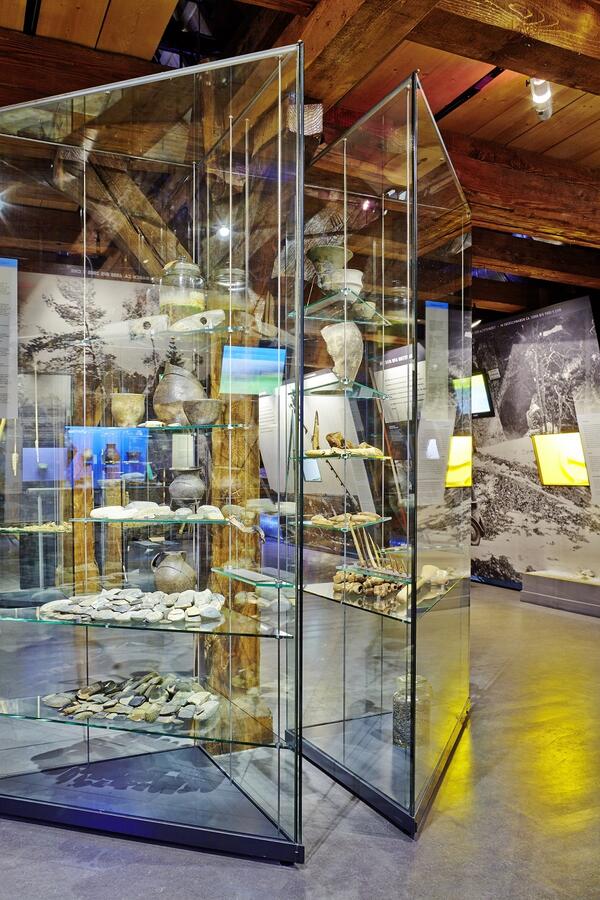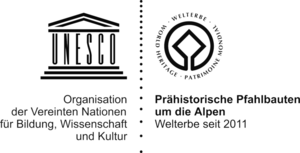Archaeology
Abundant excavation finds, especially from the Forschner Collection, which is under monument protection, testify to the life of stone-age reindeer hunters, bronze-age pile dwelling fishers, and Roman and Alemannic settlers.
In 1898 the first archaeological finds came to Biberach with the donation of Father Dr. Josef Probst’s (1823-1905) geological and paleontological collection: several pieces of evidence from the »Schussenried Pile Dwellings«, which were discovered in 1875, as well as paleolithic reindeer antlers and flintstone flakes excavated by Oscar Fraas (1824-1897) at the spring of the river Schussen in 1866.
With the founding of the museum in 1902, the Biberach Kunst- und Altertumsverein (Art and Antiquity Association) continued to expand the archaeological collection. The Museum Biberach received artefacts such as ceramic remnants from the Roman estate in Ummendorf, further pile dwelling finds, bronze knives, stone axes, and an iron arrow tip from the legendary »Kesselburg«.
In 1965 the Museum Biberach took over the collection of the Biberach dentist and pioneering archaeologist Heinrich Forschner (1880-1959) – initially as a loan until it became municipal property in 2015. Forschner had worked as a volunteer in monument protection since the 1920s. In this capacity he discovered stone-age reindeer hunters’ weapons and tools, traces of settlements and food left behind by bronze-age pile dwelling fishers, and precious burial objects of the Alemanni. With about 22,000 finds from over 300 regional findspots, the Forschner Collection is one of Germany’s most important private archaeological collections. In 2002 it was added to the Denkmalbuch Baden-Württemberg (Baden-Württemberg Book of Monuments).
In 2011, 111 »prehistoric pile dwellings« in six states became part of the UNESCO World Heritage. With the neolithic pile dwelling settlement at the Schreckensee Lake and the bronze-age Forschner Settlement, the archaeological department of the Museum Biberach features two of these UNESCO World Heritage sites.
Homepage Unesco World Heritage Pile Dwellings
Brochure Unesco World Heritage
Ten years of the World Heritage Pile Dwellings – digital showcase


